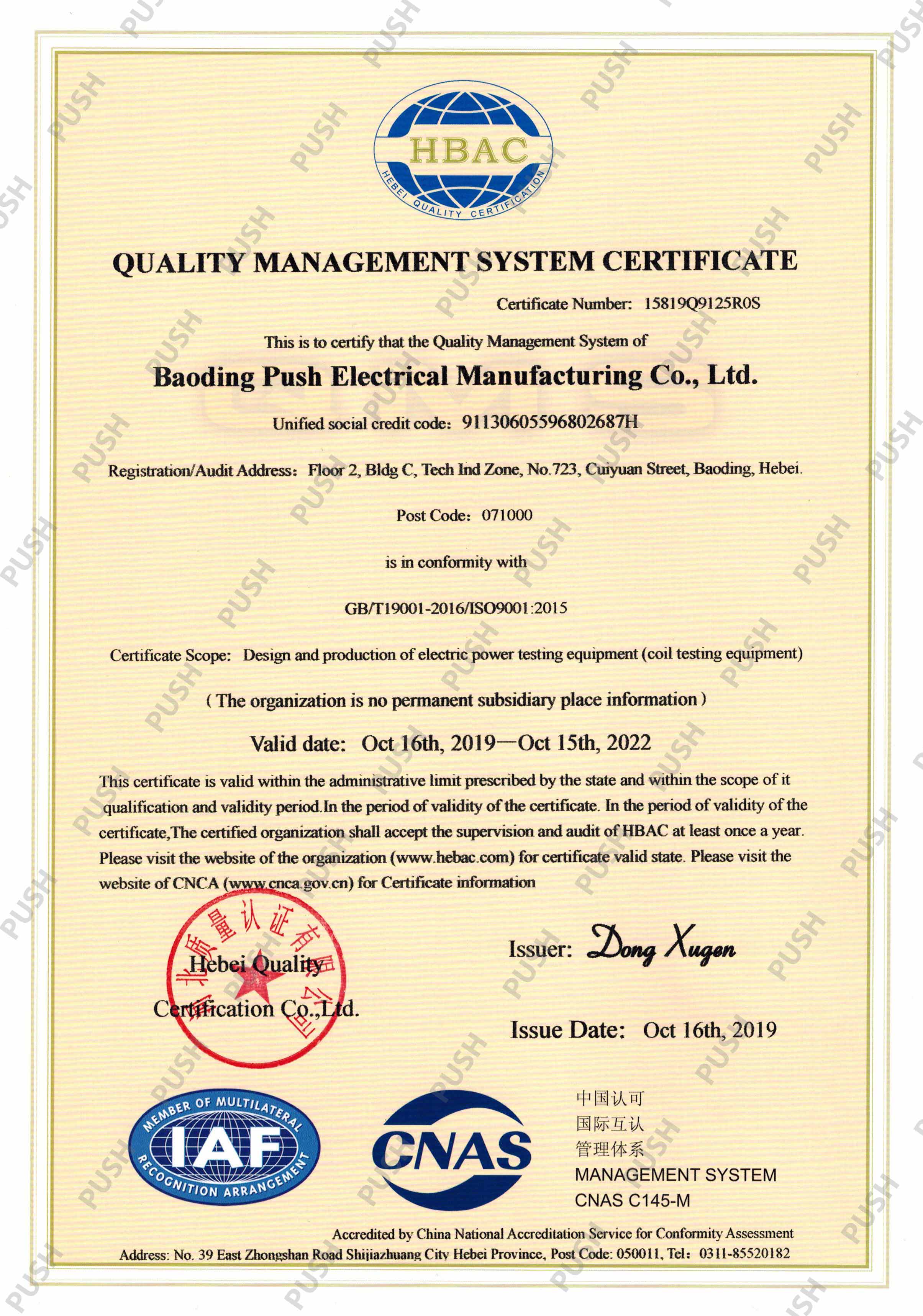 English
English


transformer voltage turns ratio
Understanding Transformer Voltage Turns Ratio
Transformers are a fundamental component in electrical engineering, facilitating the transfer of electrical energy across different voltage levels. A crucial concept in understanding how transformers function is the voltage turns ratio, often denoted as the ratio of the primary voltage to the secondary voltage, which is also equivalent to the ratio of the number of turns in the primary coil to the number in the secondary coil.
The voltage turns ratio is typically expressed as
\[ \text{Turns Ratio} = \frac{V_p}{V_s} = \frac{N_p}{N_s} \]
Where - \( V_p \) is the primary voltage, - \( V_s \) is the secondary voltage, - \( N_p \) is the number of turns in the primary winding, - \( N_s \) is the number of turns in the secondary winding
.This formula illustrates the proportional relationship between the voltages and the turns in the windings. If a transformer has a turns ratio of 21, for example, it means that for every two turns on the primary coil, there is one turn on the secondary coil. This results in the secondary voltage being half that of the primary voltage. Conversely, if the turns ratio is 12, the transformer will increase the voltage, thereby stepping it up.
The importance of the voltage turns ratio cannot be overstated. It determines how a transformer operates and impacts several key parameters, including voltage regulation, efficiency, and power handling capability. In practical terms, this means that engineers can tailor transformers to meet specific voltage requirements in power distribution systems, electrical appliances, and various electronic devices.
transformer voltage turns ratio

When designing a transformer, engineers must consider the application to ensure that the turns ratio is appropriate. For instance, in power generation and transmission, step-up transformers are commonly used to increase voltage levels for efficient long-distance transmission, thereby reducing energy losses. On the other hand, step-down transformers are employed to reduce voltage levels for safe usage in households and businesses.
It’s also essential to recognize that the voltage turns ratio is directly related to the power input and output of the transformer. According to the principle of conservation of energy (assuming an ideal transformer with no losses), the power input to the primary winding will equal the power output from the secondary winding
\[ P_p = P_s \]
Where \( P \) represents power, leading to the relationship
\[ V_p \cdot I_p = V_s \cdot I_s \]
This indicates that if the voltage increases (step-up transformer), the current decreases, and vice versa for a step-down transformer. Understanding this relationship ensures that transformers are designed with the correct specifications for their intended application, preventing issues such as overheating or voltage instability.
In conclusion, the voltage turns ratio of a transformer is essential for effective energy transfer between varying voltage levels. It not only dictates the operational characteristics of the transformer but also plays a pivotal role in the overall efficiency and functionality of electrical systems. Appropriate application and understanding of this ratio allow engineers to optimize transformer performance for diverse technological needs.
-
Differences between open cup flash point tester and closed cup flash point testerNewsOct.31,2024
-
The Reliable Load Tap ChangerNewsOct.23,2024
-
The Essential Guide to Hipot TestersNewsOct.23,2024
-
The Digital Insulation TesterNewsOct.23,2024
-
The Best Earth Loop Impedance Tester for SaleNewsOct.23,2024
-
Tan Delta Tester--The Essential Tool for Electrical Insulation TestingNewsOct.23,2024





